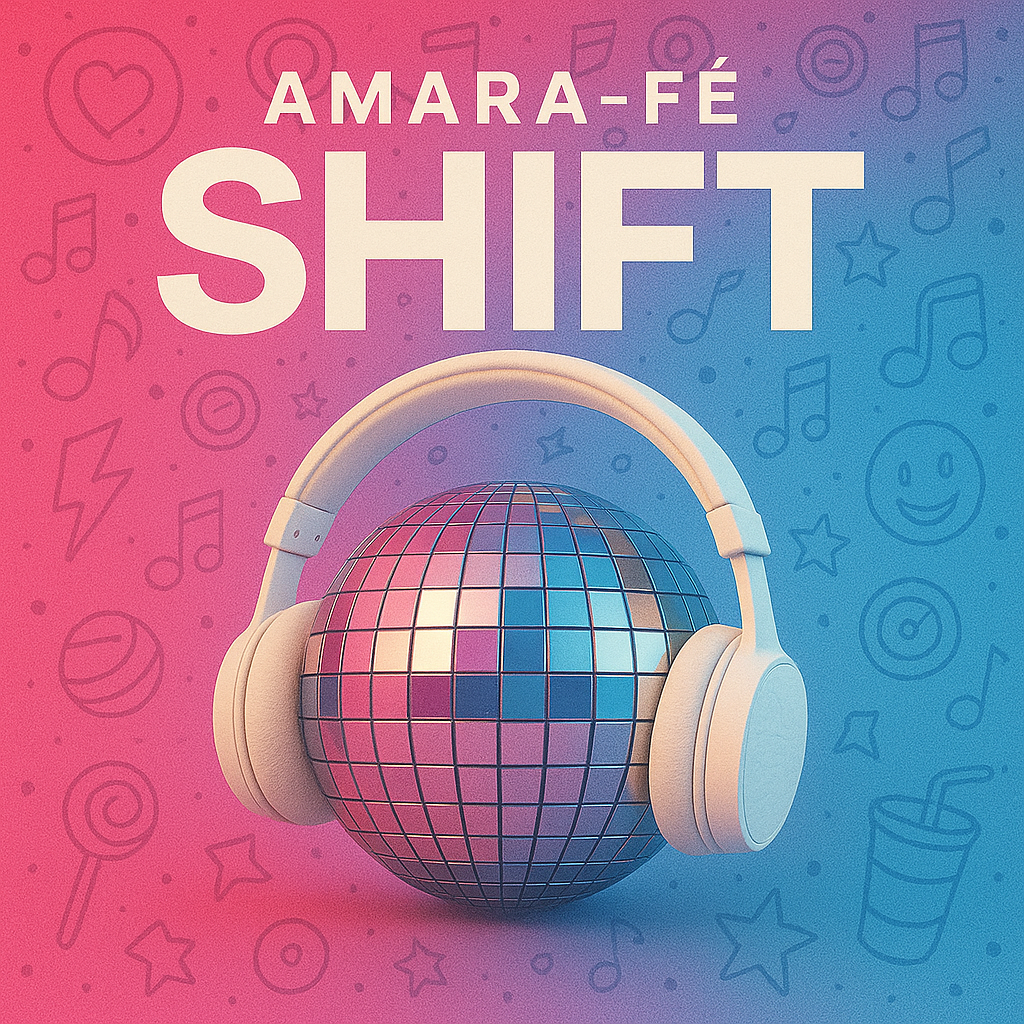Pop has always thrived on reinvention, the instinct to break form, start fresh, and make something that feels both timeless and new. On her debut album Reborn, released September 9, 2025, Mission-based artist Amara Fe channels that instinct into a sprawling, 24-track statement of perseverance and self-belief. The record’s title isn’t just symbolic; it’s autobiographical. Across its hour-plus runtime, Reborn tells the story of an artist staking her claim through sound, rhythm, and the sheer will to keep creating.
Amara Fe’s story begins long before the studio sessions that birthed the album. She grew up in a family where music was more than background noise, it was inheritance. Her uncles Eugene and Rene once jammed in Tulsa, Oklahoma, part of the same local scene that nurtured Charlie Wilson and, eventually, The Gap Band. On her mother’s side, her grandmother wrote songs for the velvet-voiced Minnie Riperton. Those histories hum beneath every note of Reborn, a reminder that Amara’s vision isn’t an isolated burst of ambition but the continuation of a lineage built on melody, groove, and the courage to perform.
“I’m inspired by music itself,” Amara Fe says. “Not by one artist, but by the idea of sound, of writing and discovering something new.” That openness explains Reborn’s remarkable stylistic sprawl. Though rooted in pop, the album slips effortlessly between neon R&B, dance-floor electronica, and breezy acoustic confessionals. The connective tissue is Amara’s voice, warm, textured, and instinctively melodic. She never oversings; instead, she trusts the tone of her phrasing to carry the emotional load.
The first thing listeners notice is the album’s scope: twenty-four songs that refuse to settle into a single mood. In an era when most artists chase algorithm-friendly brevity, Reborn feels deliberately excessive, almost radical in its abundance. Yet there’s method in that marathon. Amara seems to treat each track as a chapter, a vignette in the larger narrative of personal rebirth. The sequencing, while occasionally uneven, mirrors the ebb and flow of life itself, moments of euphoria followed by self-doubt, then the slow return to light.
One of the early highlights, “Echoes in Texas,” captures that rhythm beautifully. Built around a glistening synth line and a subtle trap-inflected beat, the song distills Amara’s central theme: the calm that follows chaos. “When the noise fades out, I find my tune,” she sings, her voice floating like smoke over the mix. It’s an understated anthem for solitude, delivered with the conviction of someone who’s learned to trust her own instincts.
Elsewhere, “Midnight Reverie” embraces pure pop maximalism, glittering percussion, stacked harmonies, and a chorus engineered for car rides and late-night dancing. It’s the kind of track that reminds you why pop can still feel liberating when it’s done without irony. Then there’s “Tulsa Blue,” a soulful slow-burn that pays direct homage to her Oklahoma roots. Over electric-piano chords that recall ’70s soul, she threads nostalgia with self-awareness: “They played those chords before I knew their names / I’m just tuning up the echoes.” It’s one of her sharpest lyrics, turning family history into emotional metaphor.
Part of what makes Reborn compelling is its setting. The entire album was recorded in Texas, where Amara relocated during its making. Far from the high-pressure bustle of Los Angeles or New York, the Lone Star quiet gave her space to experiment. “The place supports my comfort and ability to relax while I create,” she says. That sense of ease radiates through the record’s production, clean but unpretentious, with just enough studio sheen to frame her voice without burying it. You can hear her smile between takes; you can almost see the studio lights dimming as the songs unfold.
Despite its playfulness, Reborn carries a subtle undercurrent of resilience. Amara Fe isn’t a newcomer chasing virality; she’s an artist navigating the realities of building a career from the ground up. That perspective fuels the album’s mantra-like positivity. On “Focus Lane,” she distills her philosophy into one memorable hook: “When doors shut, I design my own way through.” It’s a lyric that feels less like bravado than lived advice, a quiet manifesto for anyone trying to stay creative when the odds feel stacked.
Musically, Reborn nods to multiple pop traditions without collapsing under them. There are flashes of early-2000s R&B, hints of modern synth-pop minimalism, and even the occasional gospel cadence. Yet Amara Fe never sounds like she’s chasing trends; she’s conversing with them. Her production choices—tight percussion, melodic basslines, and the occasional analog texture—suggest an artist attentive to detail but not enslaved to polish. The album’s long form works in her favor here; by the halfway mark, the listener understands that variety is part of her identity.
Still, the record isn’t without flaws. At twenty-four tracks, some songs blur at the edges; a few verses could have used another revision or a sharper hook. The sequencing occasionally dips in energy, and not every experiment lands. But even its imperfections add to the album’s charm. Reborn feels alive, restless, human, unfinished in the best sense. It’s the sound of someone finding her rhythm in real time.
If the debut album is a test of an artist’s endurance, Amara Fe passes with instinctive grace. She doesn’t posture as a visionary or a trendsetter. Instead, she offers something rarer: sincerity without self-pity, optimism without naivety. Her music radiates gratitude for the act of creation itself. You hear it in the buoyant “Cathy Lyrics,” where she playfully riffs on the concept of earworms, and in “Stay Creative,” the album’s closing track, which doubles as both a mission statement and a love letter to anyone who’s ever started over.
What ultimately anchors Reborn is Amara’s belief in renewal. The album’s title could easily have been cliché, but she earns it. By the end of the journey, you feel that rebirth alongside her, a reminder that creativity isn’t just an artistic impulse but a survival mechanism. She turns her lineage, her setbacks, and her curiosity into momentum.
Featured Image: Artist Supplied




